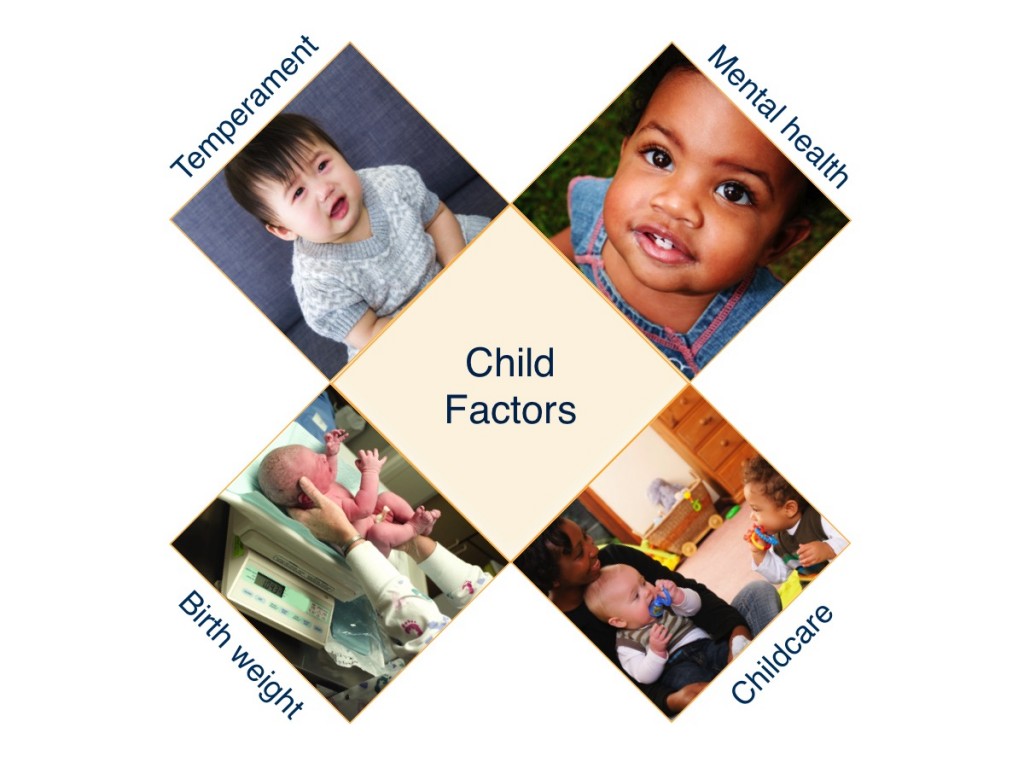
We will first look at how an infant’s traits can influence attachment security. These traits include temperament, maturity at birth, and mental health. For example, you may have heard one baby described as “easy to care for” and another baby as “difficult.” Do these traits predict quality of attachment between caregivers and infants? If caregivers are able to adapt to fit their infant’s needs, studies show that there is no relationship between traits and attachment quality.
What about daycare? Many infants in the U.S. begin childcare at an early age. Does the daily separation of primary caregiver and child affect the attachment bond? Children can have attachments with more than one person. So a child’s placement in childcare does not predict attachment security. The key factor is the quality of care an infant receives. Outcomes tend to be most positive when children have a high quality environment at home and at childcare. A high quality childcare will provide children with stimulating experiences in small class sizes. Also, childcare providers will understand that children need predictability and comfort each day. A good childcare may even protect children against negative effects from a challenging home life.
-
- Attachment
- the lasting emotional bond that forms between infants and their primary caregivers
- Proximity maintenance
- a child stays close to an attachment figure for comfort and protection
- Safe haven
- an attachment figure provides comfort and safety when a child feels unsure
- Secure base
- an attachment figure’s presence gives a child the confidence to explore her environment
- Separation distress
- a child experiences stress or anxiety when an attachment figure leaves